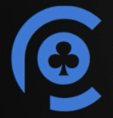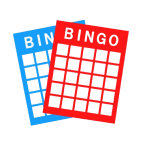Blackjack Rules: How to Play Online Blackjack
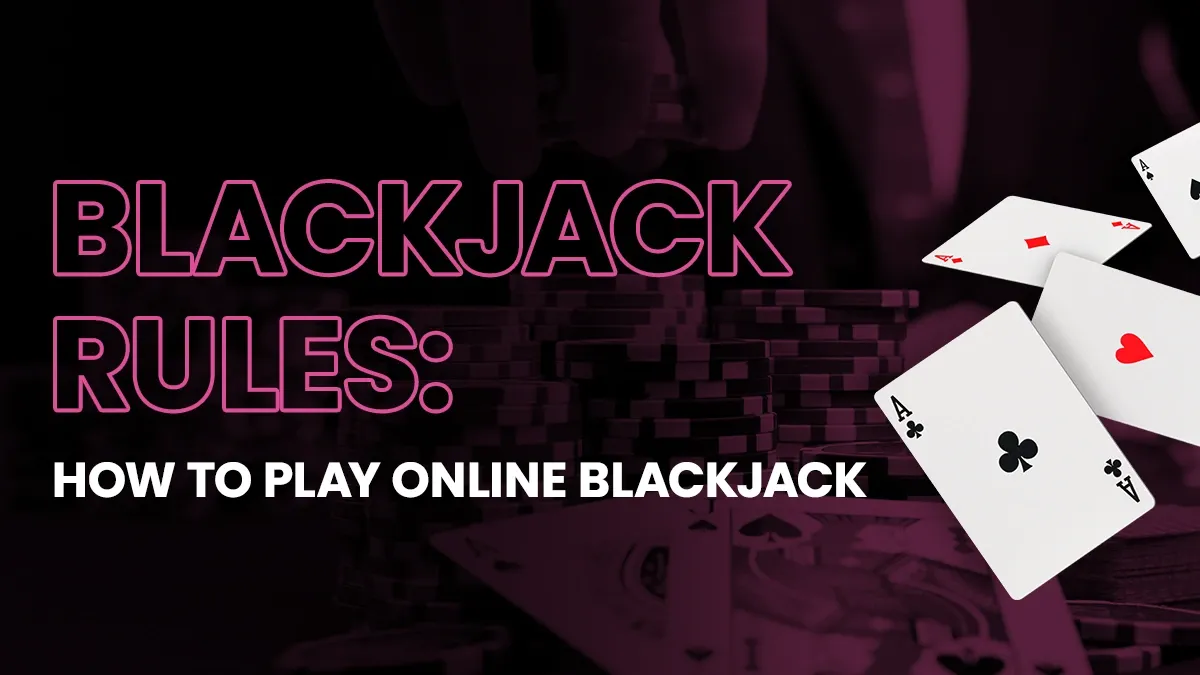
It's important to learn blackjack rules before taking a seat at the table if you want to maximize your chances of winning. This guide covers all the essential blackjack rules that you need to know. We'll also recommend some of the best online casinos in Canada where you can play blackjack.
Understanding Blackjack Rules
Blackjack's objective is simple: to have a hand total higher than the dealer’s without exceeding 21. If your hand total exceeds 21, referred to as 'busting,' you automatically lose the game.
Each card in blackjack has a specific value: numbered cards are worth their face value, face cards (kings, queens, and jacks) are worth 10, and aces can be valued as either 1 or 11.
After a hand is dealt, players can choose to hit, stand, double down, split, or surrender in an attempt to beat the dealer's hand.
Understanding the dealer’s rules, using basic strategy charts, and knowing the game’s odds are crucial for optimizing gameplay and maximizing winning potential.
The Initial Bet and Dealing Cards
Blackjack begins with players placing their initial bet in designated circles on the table, setting the stage for the game. After all bets are placed, the dealer deals cards clockwise, starting from their left. They deal two face-up cards to each player and two cards to themselves, one face-up and one face-down (known as the hole card).
Player Options: Hit, Stand, Double Down, and Split
Once the cards are dealt, players have several options to consider:
-
Hit: Opting to ‘hit’ involves requesting an additional card to boost your hand total. This can be a risky move, especially if you’re close to 21, but it can also be rewarding if you need just a few more points to beat the dealer.
-
Stand: Choosing to ‘stand’ indicates satisfaction with your hand value, declining any more cards. This option is often chosen when you have a strong hand and believe that further cards might cause you to bust.
-
Double-Down: Doubling down is another strategic option where you increase your initial wager by 100% and receive only one additional card. This move can be highly profitable when used correctly, especially with a strong starting hand.
-
Split: ‘Splitting’ allows you to turn a pair of identical cards into two separate hands, requiring an additional bet equal to your original wager. This can be particularly advantageous with pairs of split aces or eights, as it increases your chances of forming stronger hands.
-
Surrender: Some variations of blackjack also offer the option to surrender. This involves giving up your hand and reclaiming half of your initial bet. Players typically use this strategy when their chances of winning seem slim, such as when facing a dealer's strong upcard with a weak hand.
Basic strategy assists with determining the best course of action in any given scenario. Below, we'll discuss when you should hit, stand, double down, split and surrender!
Blackjack Basic Strategy
To improve your game, it’s essential to learn basic blackjack strategy. Blackjack basic strategy was developed through extensive mathematical analysis and computer simulations. Using a basic strategy chart informs decision-making based on your hand and the dealer’s upcard. This chart offers statistically optimal moves for every possible hand combination.

Bankroll management is another critical aspect of blackjack strategy. Betting no more than 1-2% of your total bankroll per hand is recommended to avoid significant losses. Additionally, certain rules can impact your strategy, such as whether the dealer hits on soft 17 or if you can double down after splitting.
When to Hit or Stand
Deciding when to hit or stand is a fundamental part of playing blackjack; mastering this decision can significantly impact your success. The optimal play depends on your hand total and the dealer's face-up card.
When to Hit:
-
Hand Total of 11 or Lower: Always hit, as you cannot bust and have a chance to improve your hand significantly.
-
Hand Total of 12-16: Hit if the dealer's face-up card is 7 or higher. The dealer has a strong chance of forming a winning hand, so you should aim to improve your total.
-
Soft Hands (Ace and a Low Card): Hit on soft 17 or lower. The flexibility of the ace allows you to improve your hand without the risk of busting.
-
Soft 18 (Ace and a 7): Hit when the dealer's face-up card is 9, 10 or Ace.
When to Stand:
-
Hand Total of 17 or Higher: Stand, as the risk of busting is high with any additional cards.
-
Hand Total of 12-16: Stand if the dealer's face-up card is 2 to 6. The dealer is more likely to bust with these weaker cards, making it advantageous to hold your current hand.
-
Soft 18 or Higher: Stand if the dealer's face-up card is 2 to 8, as you already have a strong hand.
Understanding these basic guidelines can help you make informed decisions while playing blackjack and increase your chances of winning against the dealer.
Splitting Pairs
When the two cards you’re dealt have the same value, you can split the cards and play two hands. You will have to double your original bet to do so. This can be favourable in certain situations, such as when you’re dealt two eights or aces. However, it’s not always recommended, especially if the dealer’s up-card is strong.
When to Split:
-
Aces: Always split aces. Splitting aces gives you a strong chance of forming two powerful hands. Note that players typically receive only one more card when splitting aces and cannot hit again.
-
Eights: Always split eights. An initial hand of 16 is weak, but splitting eights gives you an opportunity to make two strong hands.
-
Twos, Threes, and Sevens: Split these if the dealer's up-card is between 2 and 7.
-
Sixes: Split if the dealer's up-card is between 2 and 6.
-
Nines: Split if the dealer's up-card is between 2 and 6, or 8 and 9.
When Not to Split:
-
Tens and Face Cards: Never split tens or face cards. A hand total of 20 is already very strong, and splitting reduces your chances of winning.
-
Fours and Fives: Avoid splitting fours and fives. A pair of fours gives you a total of 8, which can be improved with a hit, and a pair of fives totals 10, a strong starting point for doubling down.
-
Sixes and Sevens: Do not split if the dealer's up-card is 8 or higher, as the risk of the dealer forming a strong hand is higher.
Doubling Down
Doubling down is a major part of blackjack strategy, as it allows players to double their original bet and receive one additional card in situations when players believe they have a strong chance of winning. This option is typically only available after the first two cards are dealt.
Here are some key situations when doubling down is recommended:
-
When You Have a Total of 11: This is often the best time to double down.
-
When You Have a Total of 10: Consider doubling down if the dealer's face-up card is 9 or lower.
-
When You Have a Total of 9: Double down if the dealer's up card is between 3 and 6.
-
Soft 16 to 18 (Ace and 5, 6, or 7): If the dealer’s up-card is weak (between 2 and 6).
Surrendering
If it is an option, players should consider surrendering in blackjack when the odds of winning the hand are significantly low. Common surrender scenarios include having a hard 16 (excluding a pair of 8s) against a dealer's 9, 10, or Ace or a hard 15 against a dealer's 10. Surrendering in these situations can minimize losses by allowing the player to recover half of their bet rather than risking a full loss on a likely unfavourable outcome.
Dealer's Hand: Rules and Actions
After all players have completed their turns, it’s the dealer’s time to act. Strict rules govern the dealer’s actions. They are required to keep drawing cards until their hand total reaches at least 17. If their hand totals 16 or less, they must take another card. This rule prevents the dealer from standing on a weak hand, adding predictability to their actions.
If the dealer busts, all remaining players win their bets for that round. Conversely, if the dealer does not bust, the winner or winners are determined by who has the higher hand value. All players with a higher hand value than the dealer win, as players never play against one another.
The dealer must reveal their hole card only after all players have completed their turns. This structured approach ensures fairness and smooth gameplay.
Blackjack Side Bets
To be perfectly clear, all blackjack side bets have a higher house edge than simply playing regular hand. If you want to maximize your winnings, avoiding side bets altogether is best.
That said, blackjack side bets can add more fun and excitement to the game. Side bets are additional wagers placed alongside your main bet, predicting various outcomes of the player’s and sometimes the dealer’s cards. Common side bets include Insurance, Perfect Pairs, and 21+3, each offering unique payouts and risks.
-
Insurance: This bet allows you to protect your main wager if the dealer’s face-up card is an Ace. This bet pays out 2:1 if the dealer has a blackjack and loses if they do not.
-
Perfect Pairs: This side bet lets you win by being dealt two matching cards. Depending on the pair type, payouts range from 5:1 to 25:1.
-
21+3: This bet allows players to wager on their two initial cards and the dealer’s face-up card forming a poker hand, such as a flush, straight, three-of-a-kind, straight flush, or suited three of a kind, each offering distinct payouts but with a higher house edge.
Many other side bets are available, and although tempting, it’s crucial to understand that these are losing bets in the long run.
Blackjack Odds and RTP
Blackjack is known for having some of the best odds in the casino world. The Return to Player (RTP) for blackjack is highly favourable, often starting at 99% for a single-deck game. This high RTP makes blackjack a preferred choice for many players seeking better chances of winning.
However, the odds can vary based on the number of decks used and specific game rules. For instance, multi-deck blackjack games make it harder for card counters to keep track of the cards, reducing the player’s advantage. Knowing these odds and their impact on your gameplay is key to making informed decisions at the blackjack table.
Blackjack Game Variants and Rule Variations
There are many different blackjack variants with different sets of rules and strategies. However, the goal remains the same: get as close to 21 as possible without going over.
Certain rule variations can favour the player, such as being allowed to double down after splitting. Others, like the dealer hitting on soft 17, can increase the house edge. Knowing these variations helps you adapt your strategy to different blackjack games and boosts your chances of success.
Some of the most common blackjack variations you'll come across are:
-
European Blackjack: European Blackjack is played using two decks and differs in that the dealer does not receive a hole card until all players have completed their actions.
-
Atlantic City Blackjack: Atlantic City Blackjack uses eight decks and offers player-friendly rules such as late surrender, doubling down on any two cards, and re-splitting aces. These rules help maintain a relatively low house edge, making this variant appealing to many players.
-
Spanish 21: Spanish 21 is played with a 48-card deck, removing the four tens, which alters the basic strategy. It often features bonus payouts for specific hand combinations, like achieving a 21 with five or more cards. Player-friendly rules such as late surrender and the ability to double down after splitting are usually available, too.
-
Double Exposure Blackjack: In Double Exposure Blackjack, both of the dealer's cards are dealt face-up, making it easier for the player to determine their optimal move. However, this advantage is countered by the rule that ties result in a win for the dealer, and blackjacks pay even money, both increasing the house edge.
-
Vegas Strip Blackjack: Vegas Strip Blackjack is played with four decks and includes rules like doubling down on any two cards and splitting up to three times. The dealer must stand on all 17s, which slightly reduces the house edge compared to other variants.
Card Counting and Advanced Techniques
Card counting is an advanced technique that experienced blackjack players use to gain an edge over the house. This method involves tracking the ratio of high to low cards dealt to predict favourable betting situations. Maintaining a running count allows players to make more informed decisions about when to increase their bets.
One of the most popular card counting systems is the Hi-Lo system, which assigns a value of +1 to low cards (2-6) and -1 to high cards (10-Ace). This system helps players maintain a running count of the cards dealt, allowing them to bet more aggressively when the count is in their favour. Shuffle tracking and ace sequencing are additional advanced techniques that can further enhance a player’s advantage.
Common Mistakes to Avoid
Even seasoned players can fall into common traps while playing blackjack. Common mistakes include:
-
Never hitting on a soft 18 (Ace and 7). You should hit a soft 18 when the dealer's face-up card is 9, 10 or Ace.
-
Taking insurance bets. Side bets have a poor return in the long run.
-
Standing on low hands against a dealer’s strong card instead of hitting or doubling down.
-
Overbetting your bankroll can lead to rash decisions and significant losses.
Avoiding these common mistakes increases your chances of success at the blackjack table.
Where to Play Blackjack Online
Most casinos offer a wide variety of blackjack games, catering to both novice and experienced players. Here, we’ll explore some of the best online casinos to play blackjack to help you make an informed decision. Each of these online casinos offers numerous blackjack tables and game variations.
Casino Days
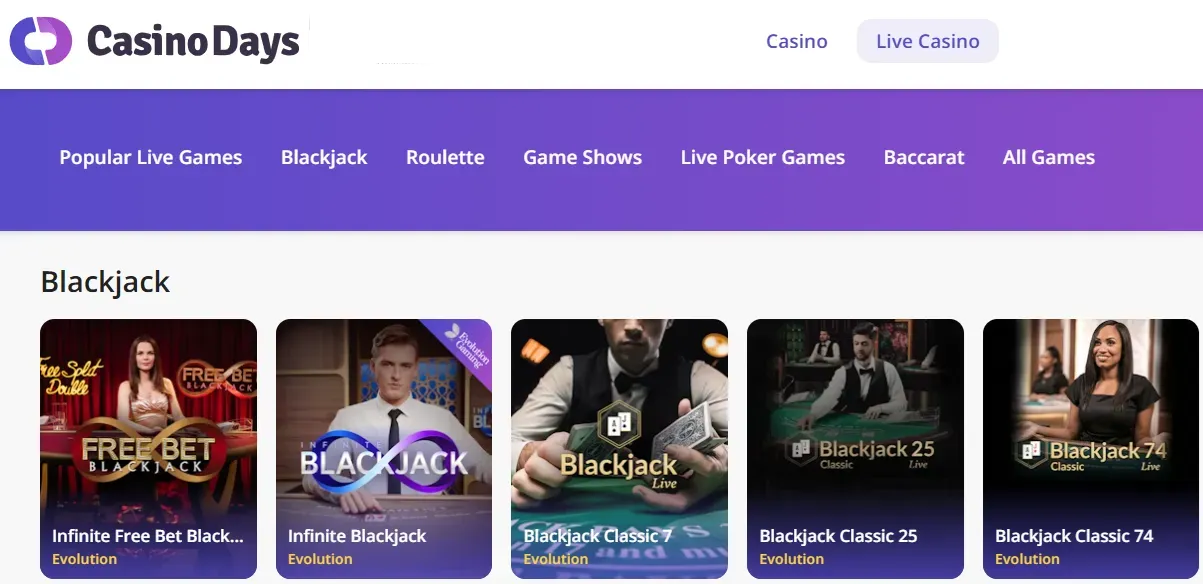
Casino Days offers an impressive selection of over 4,000 games, providing many choices for fans of slots, table games, and live dealer games. The platform is also celebrated for its swift withdrawal process, often completing requests within 24 hours—a significant advantage in the online casino industry.
Casino Days offers many game variants to play blackjack, including:
-
American Blackjack
-
Blackjack Switch
-
Classic Blackjack
-
European Blackjack
-
Perfect Pairs Blackjack
NorthStar Bets Casino

NorthStar Bets Casino is an excellent choice for Canadian players. With a selection of over 200 games, including slots and live dealer options, the platform delivers a diverse gaming experience. Northstar Bets Casino is also known for its strong customer support and ensuring that players receive prompt assistance.
If you're looking to play blackjack, you can enjoy:
-
Atlantic City Blackjack
-
Classic Blackjack
-
European Blackjack
-
Multihand Blackjack
-
Perfect Pairs Blackjack
-
Vegas Strip Blackjack
-
21+3 Blackjack
bet365 Casino
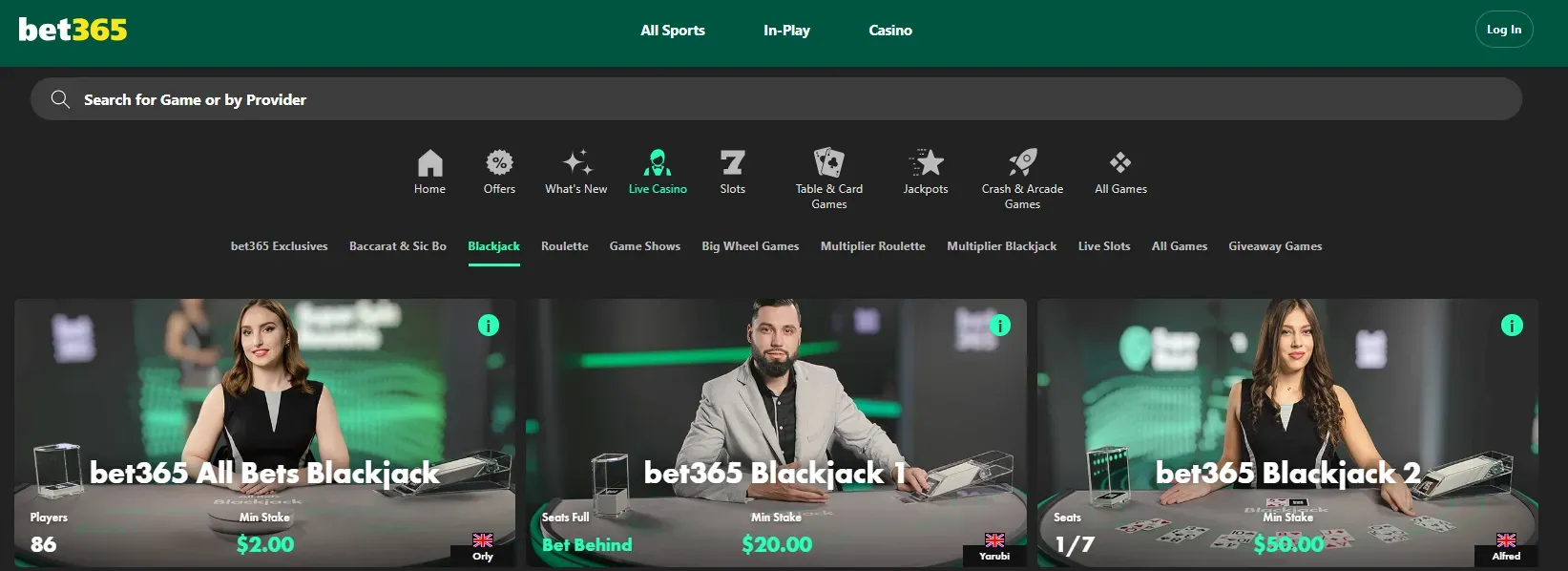
bet365 Casino is celebrated for its vast array of premium live dealer games, making it a top choice for players who want an authentic casino experience from the comfort of their homes. Players can also enjoy a comprehensive, fully integrated sportsbook.
Bet365 Casino features many ways to play blackjack, including:
-
Blackjack Surrender
-
Blackjack Switch
-
Multiplayer Blackjack
-
Perfect Pairs Blackjack
-
Vegas Strip Blackjack
-
21+3 Blackjack
Casumo Casino
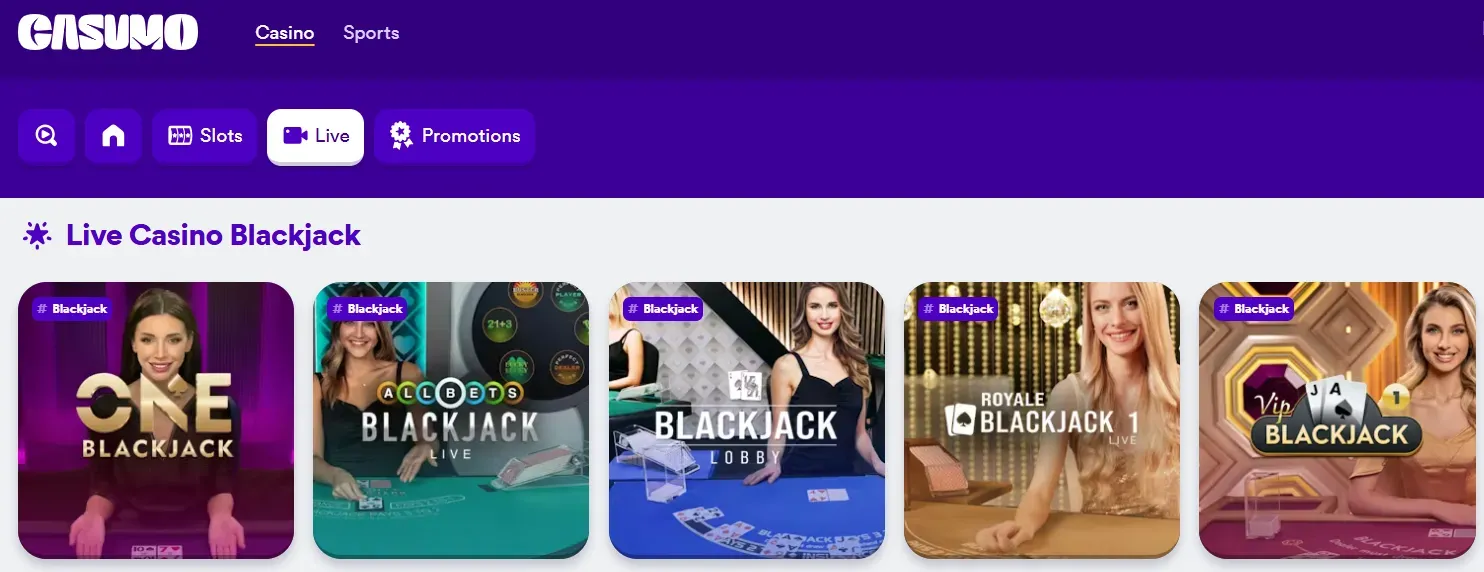
Casumo Casino is a popular choice for blackjack enthusiasts. It offers a wide range of blackjack games and unique features that set it apart from other online casinos. The casino’s user-friendly interface and engaging gameplay make it an excellent platform for both novice and experienced players.
Casumo delivers an impressive array of blackjack variations, including:
-
All Bets Blackjack
-
Classic Live Blackjack
-
Free Bet Blackjack
-
Infinite Blackjack
-
Power Blackjack
-
Speed Blackjack
-
VIP Blackjack
You can even play blackjack for free at Casumo Casino. Casumo Casino offers demo modes for most of their games, allowing you to play without financial risk!
Sports Interaction Casino
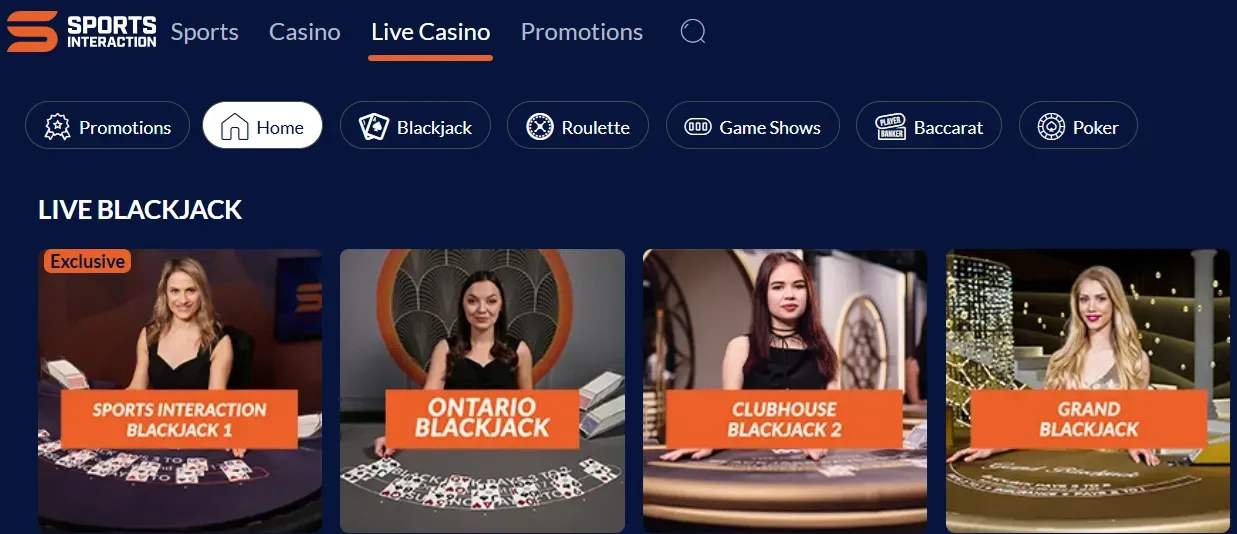
Sports Interaction (SIA) is renowned as one of Canada's best online casinos. With a long-standing history in the industry, it features an extensive array of live blackjack games, delivering a genuine casino experience directly to your home.
Among the blackjack variants at SIA Casino, you'll find:
-
All Bets Blackjack
-
Elevation Blackjack
-
Free Bet Blackjack
-
Grand Blackjack
-
Lightning Blackjack
-
Majority Rules Blackjack
-
Ontario Blackjack
Summary
In conclusion, understanding the game rules, player options and basic blackjack strategy can significantly enhance your gaming experience and increase your chances of long-term winning. The importance of bankroll management and avoiding common mistakes cannot be overstated, as these practices help maintain a disciplined and successful approach to the game.
By leveraging the information in this guide, you’ll be well-equipped to navigate the blackjack world with confidence and skill. Good luck!
Read More - Top Canadian Online Casino Reviews






















